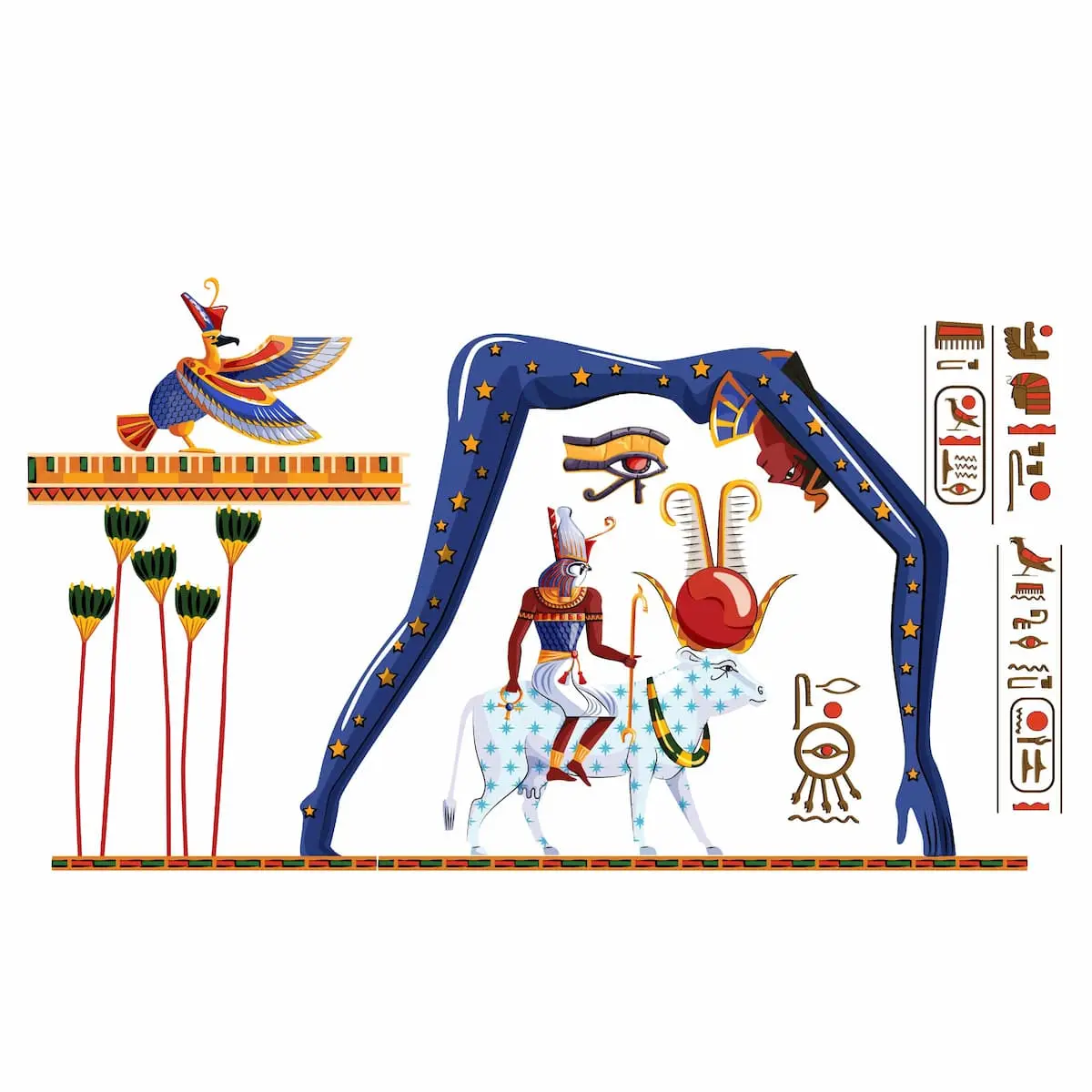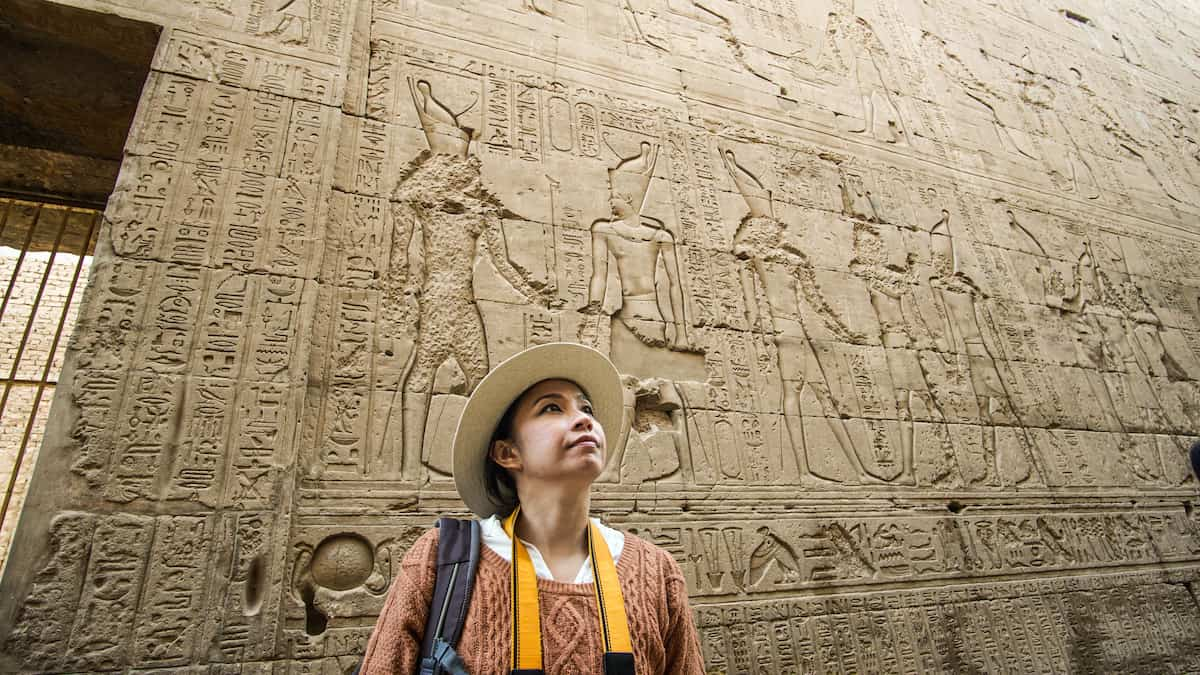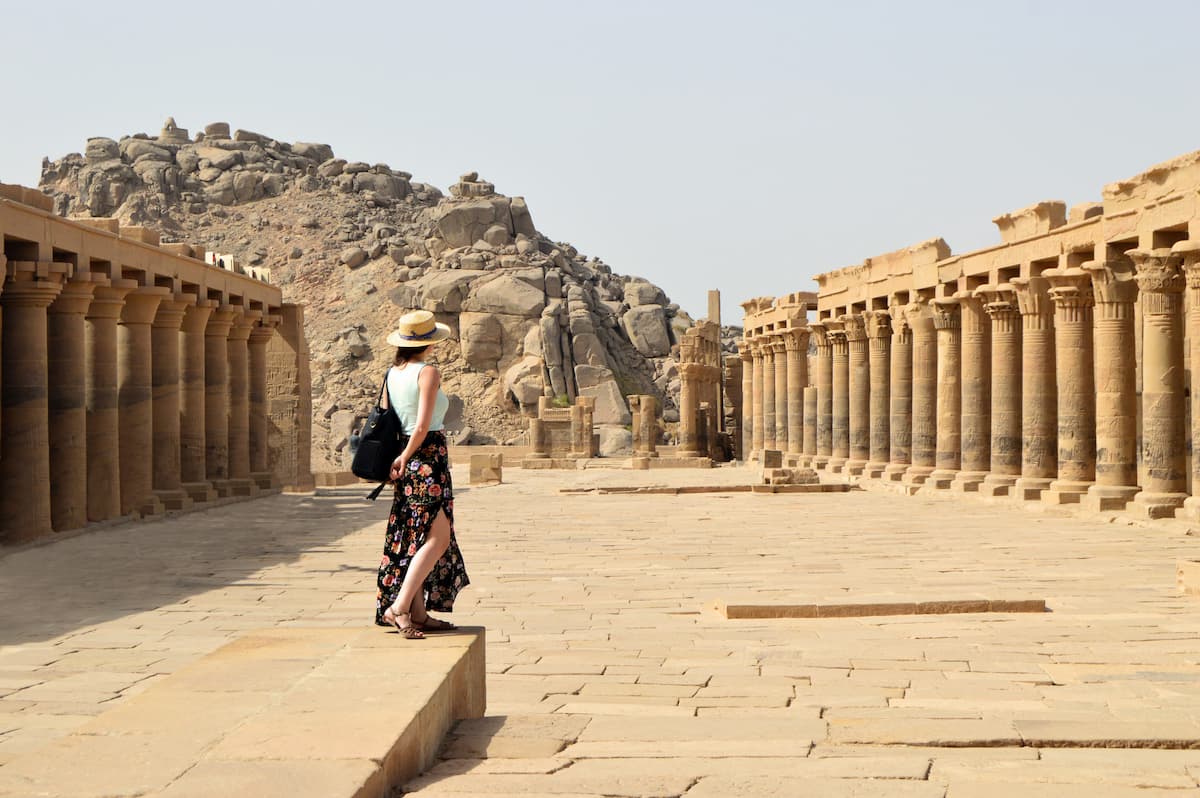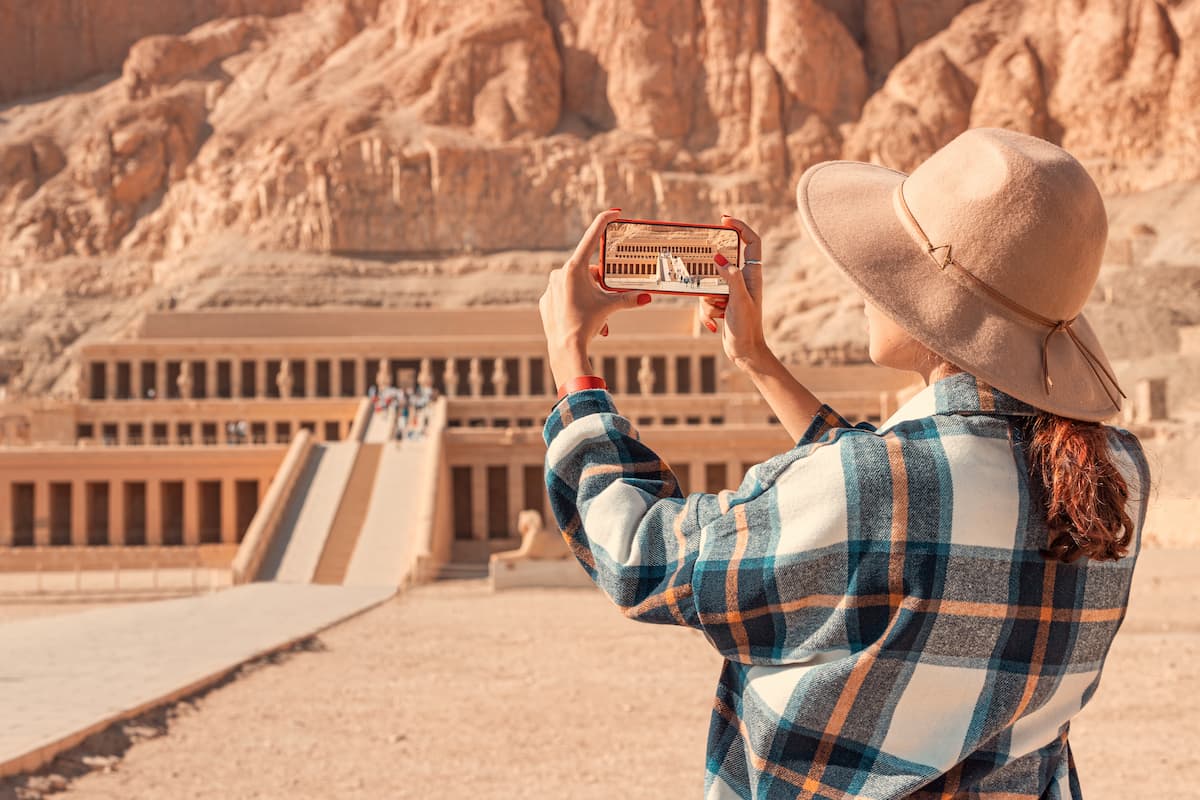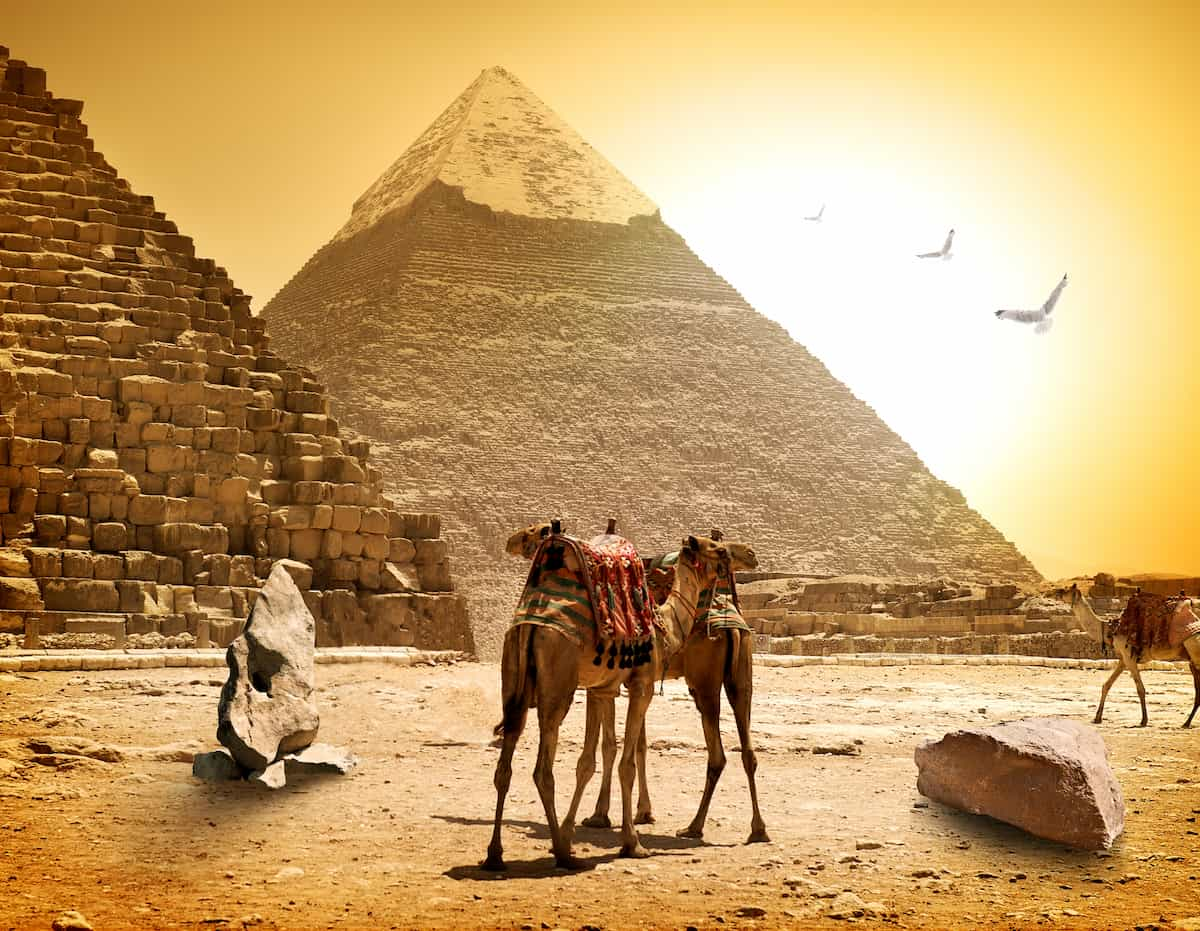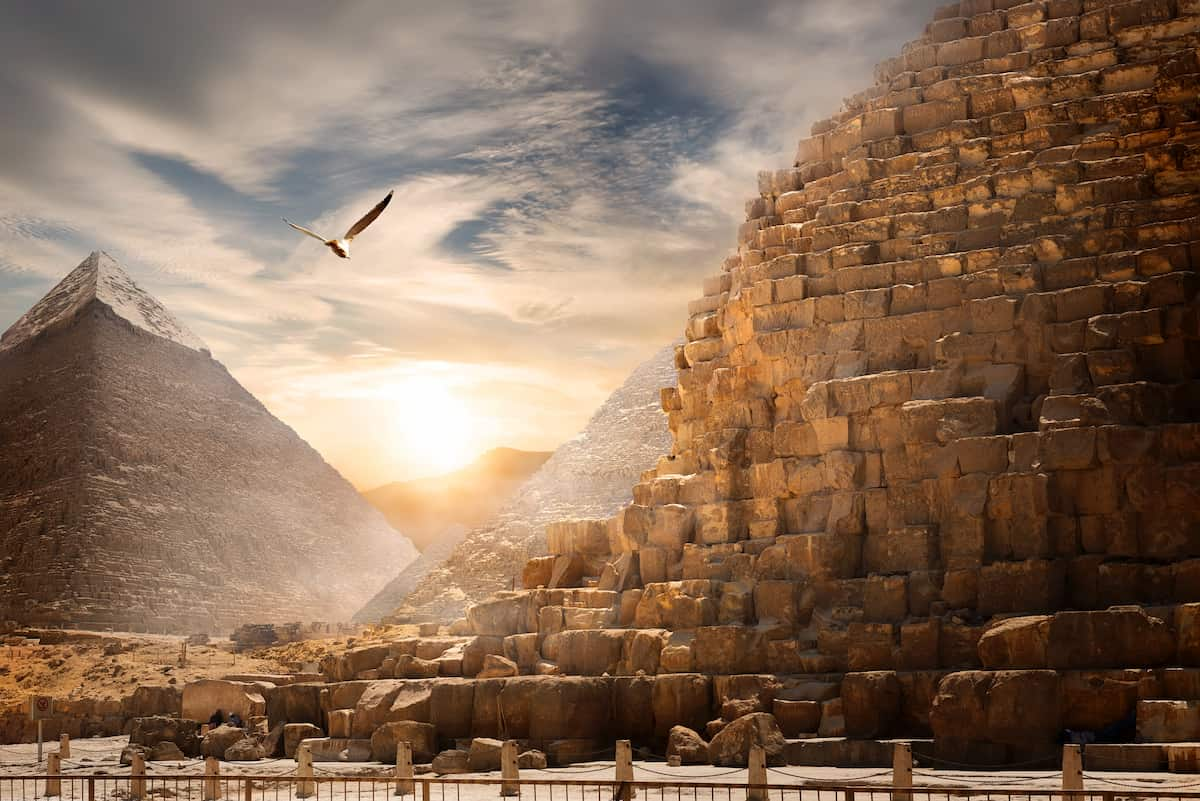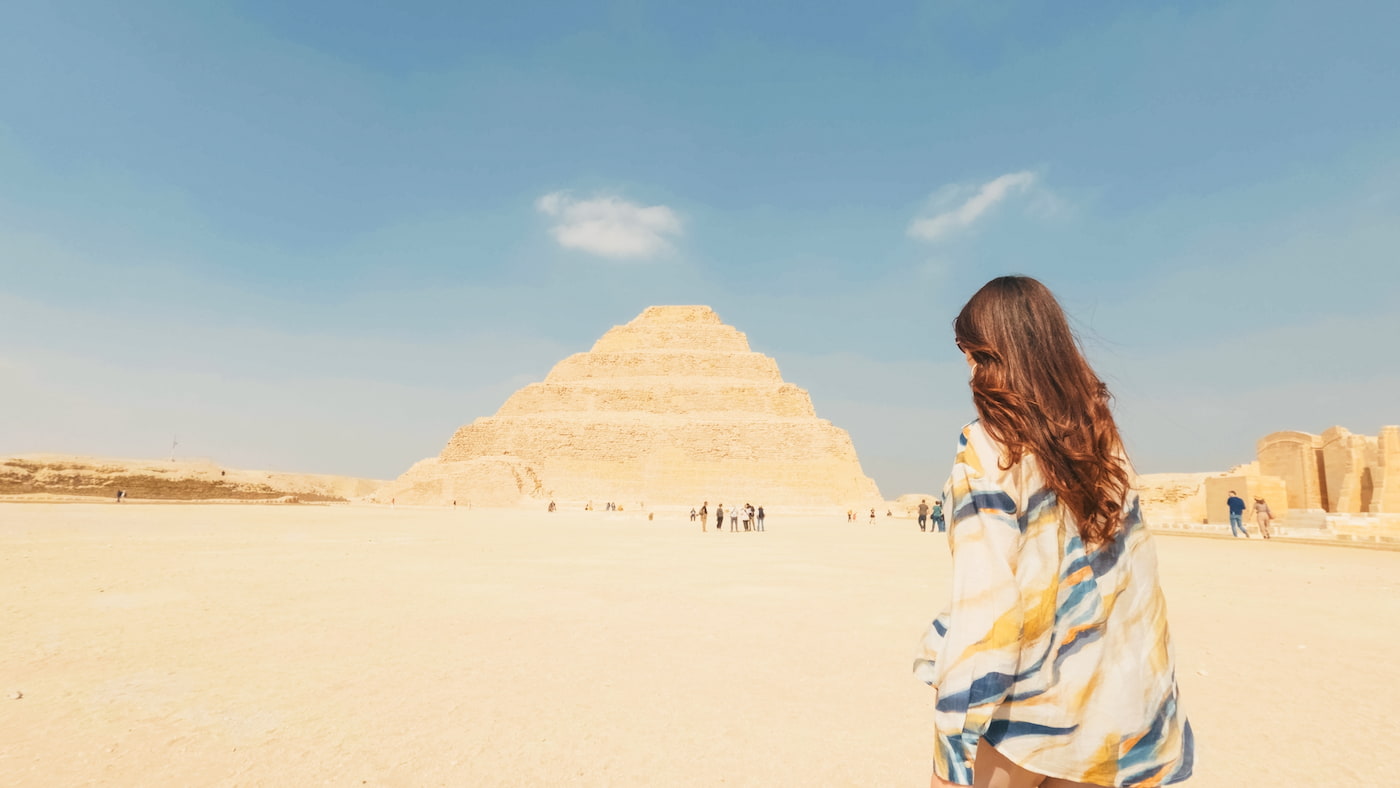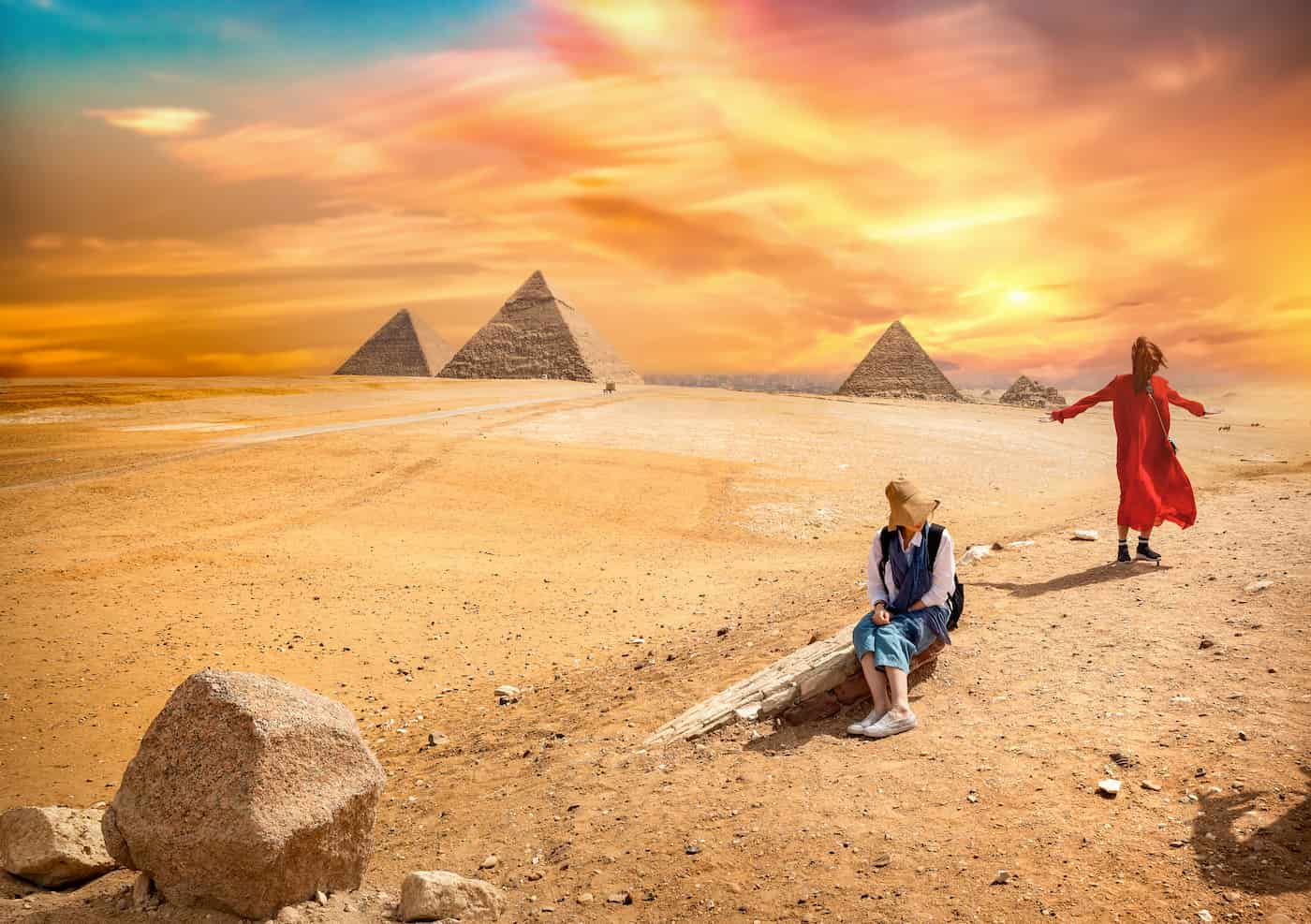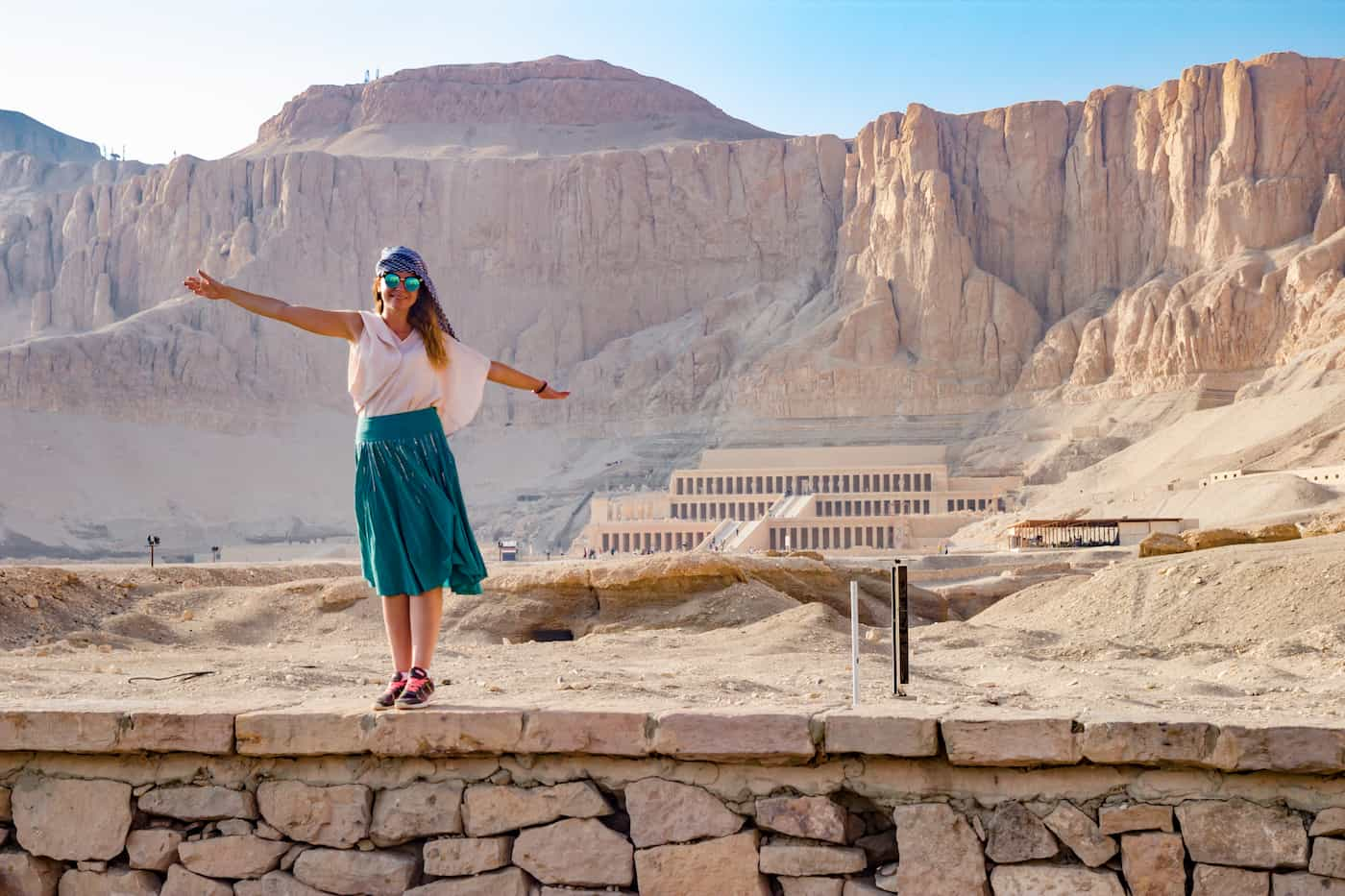Egyptian God Nut in Egyptian Mythology: The Goddess of the Sky, Heavens, and Stars in Ancient Egyptian Religion
Nut is the goddess of the sky, stars, cosmos, mothers, astronomy, and the universe in the ancient Egyptian religion. She is often a nude female covered with stars and arching over the Earth, and sometimes as a cow. Alternatively, she is identified with a water-pot above her head.
In Egyptian mythology, Nut was the goddess of the sky. Her body made a protective layer over the Earth. Nut was the sister and wife of Geb, and the mother of (with Ra) Osiris, Nephthys, Isis, and Set, and grandmother of Horus. Horus was also a grandchild of Ra. The ancient Egyptians believed that Nut swallowed the sun-god, Ra, every night and gave birth to him every morning.
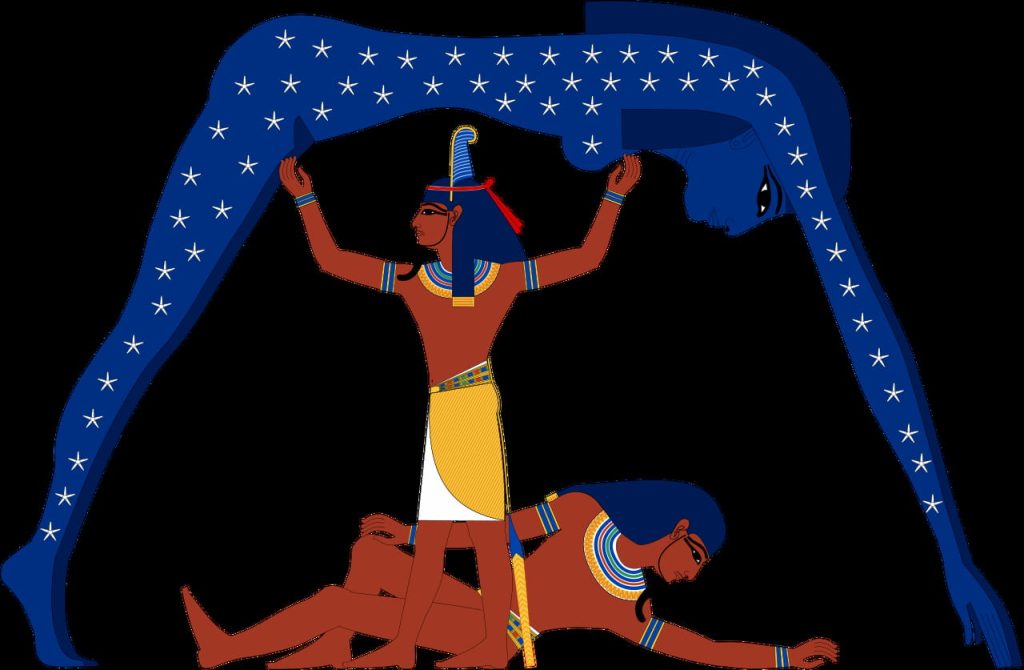
Shu, Geb, and Nut
She was mostly depicted in nude human form. Nut was also sometimes in the form of a cow whose great body formed the sky and heavens, a sycamore tree, or as a giant sow, suckling many piglets, which represent the stars.
Names of Nut
The pronunciation of ancient Egyptian is uncertain because of the omission of vowels from its writing, although her name often includes the unpronounced determinative hieroglyph for “sky”. Her name Nwt, itself also meaning “Sky”. It is usually transcribed as “Nut” but also sometimes appears in older sources as Nunut, Nenet, Nuit, or Not. She also appears in the hieroglyphic record by many epithets, not all of which are understood.
An Overview of the Nut Family
According to Egyptian mythology, Nut is the daughter of Shu and Tefnut. They represent the god of air and the goddess of moisture. She is married to her brother Geb, who is the god of the earth. The sun god(Ra) cursed Nut to prevent her from giving birth on any day of the year because of a prophecy that one of her children would overthrow him.
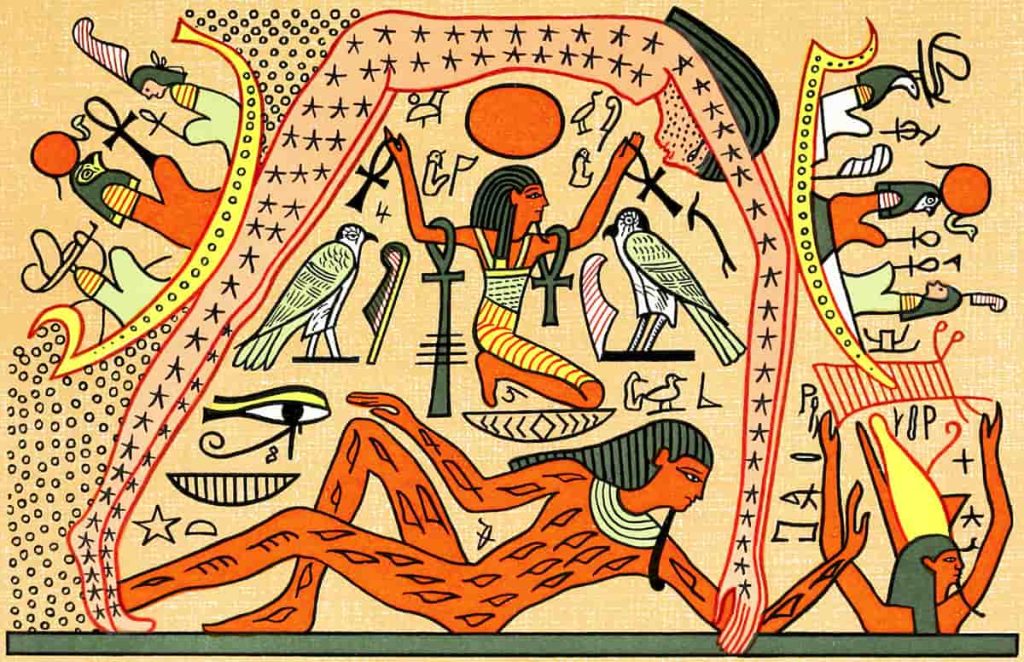
Geb and the Egyptian god Nut
However, Thoth, the god of wisdom, devised a clever plan. He gambled with the moon god Khonsu. He won enough moonlight to create five extra days. These days, known as the Epagomenal Days, allowed Nut to give birth to five children: Osiris, Isis, Set, Nephthys, and Horus the Elder. She is one of the oldest deities among the Egyptian pantheon, with her origin found in the creation story of Heliopolis. She was originally the goddess of the nighttime sky, but eventually became referred to as simply the sky goddess.
The Separation of Geb and Nut
Nut Children
Nut children are of the most important deities in Egyptian mythology:
- Osiris is perhaps the most well-known of Nut and Geb’s children. As the god of the afterlife, he represents death, resurrection, and the promise of eternal life. Osiris’s story, particularly his murder by Set and resurrection by Isis, is central to Egyptian beliefs about life after death.
- Isis is the Goddess of Magic and Motherhood: Her dedication to her husband Osiris and her son Horus highlights her role as a protector and nurturer. Isis’s powers and her role in the resurrection of Osiris make her one of the most respected deities in Egyptian mythology.
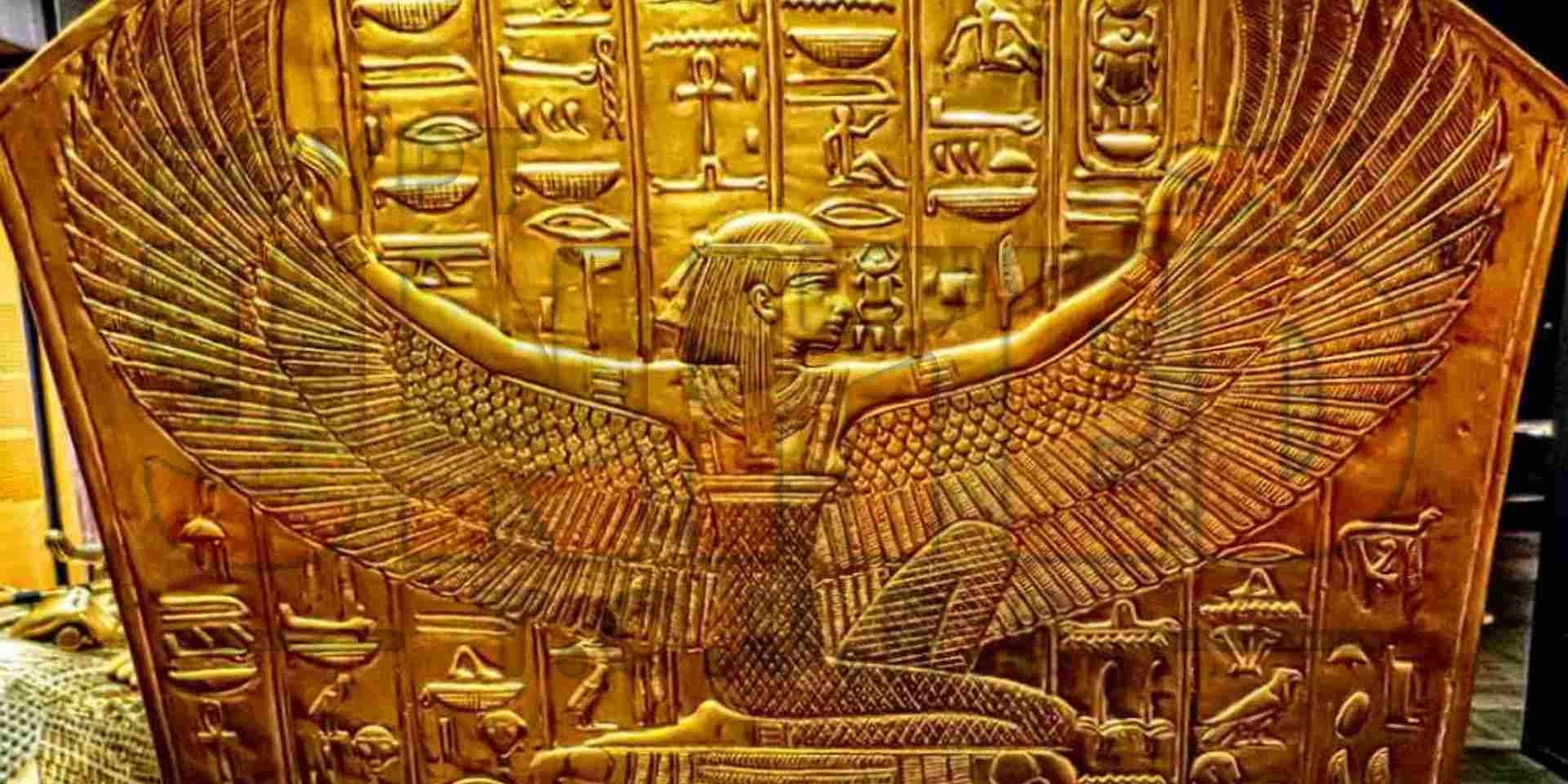
Isis, the Egyptian god Nut
- Set is the god of chaos, violence, and desert storms. His tumultuous nature often puts him in opposition to his siblings, particularly Osiris and Horus. Set’s role as an antagonist in many myths highlights the duality of order and chaos in the universe.
- Nephthys is the Goddess of Mourning and Protection, and the afterlife. Though often overshadowed by her more prominent siblings, she plays a role in the myth of Osiris. She assists Isis in his resurrection and protects the deceased in the afterlife.
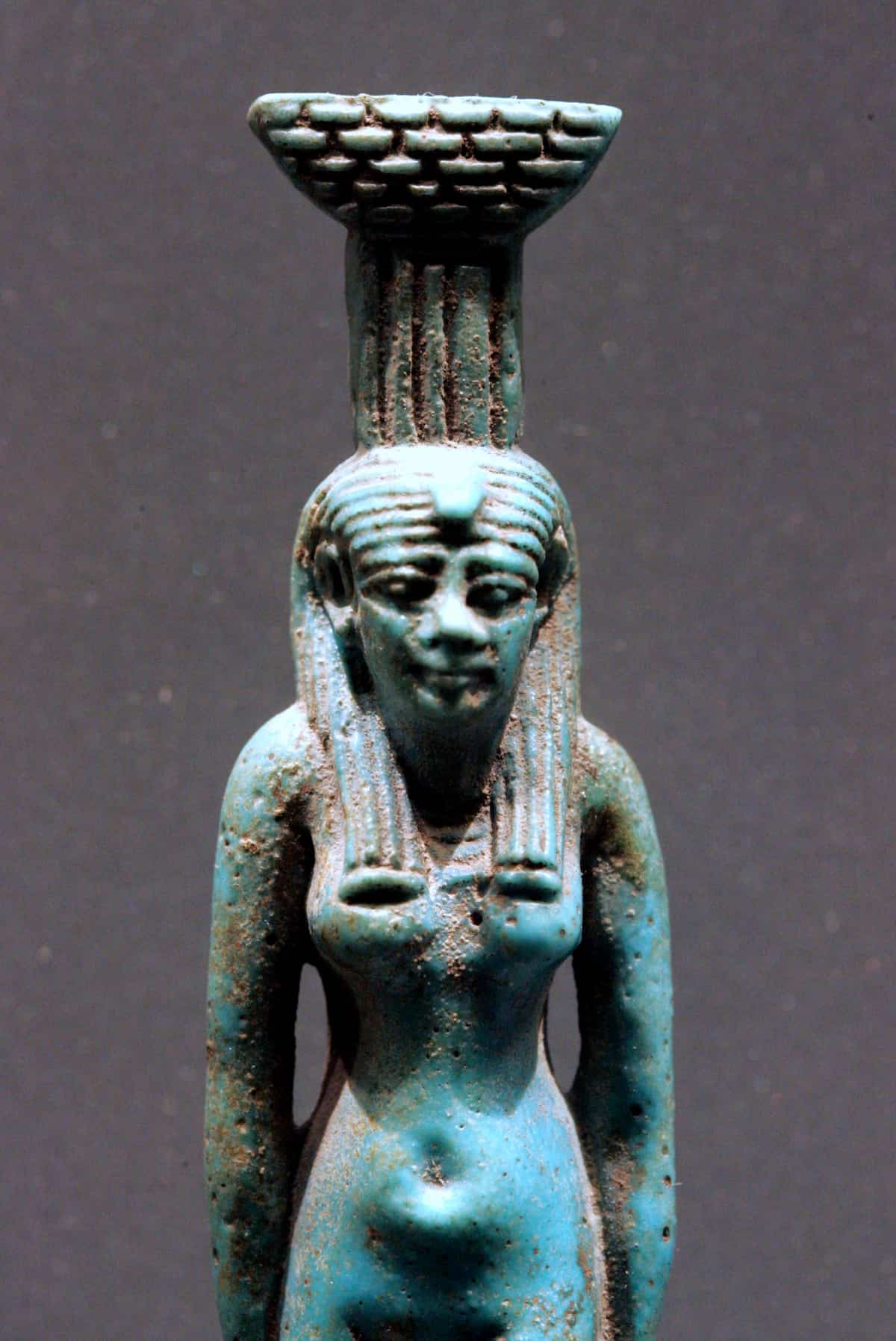
Nephthys, the daughter of the Egyptian god Nut
- Finally, Horus the Elder embodies the sky god who stands for protection and kingship. Distinct from a younger version of Horus (that is, son of Isis and Osiris), Horus the Elder symbolizes the celestial aspect of Nut’s domain and this protective aspect of the sky.
The Role and Symbols of This Goddess
Nut’s symbols reflect her divine role as the goddess of the sky. Each symbol carries deep significance and highlights different aspects of her celestial responsibilities.
- Nut was the goddess of the sky and all heavenly bodies, a symbol of protecting the dead when they enter the afterlife. According to the Egyptians, during the day, the heavenly bodies such as the Sun and Moon would make their way across her body. Then they would disappear at dusk, pass through her belly during the night, and be reborn at dawn.
- Nut is also the barrier separating the forces of chaos from the ordered cosmos in the world. She was like a woman arched on her toes and fingertips over the Earth. Her body is like a star-filled sky. Nut’s fingers and toes were believed to touch the four cardinal points or directions of north, south, east, and west.
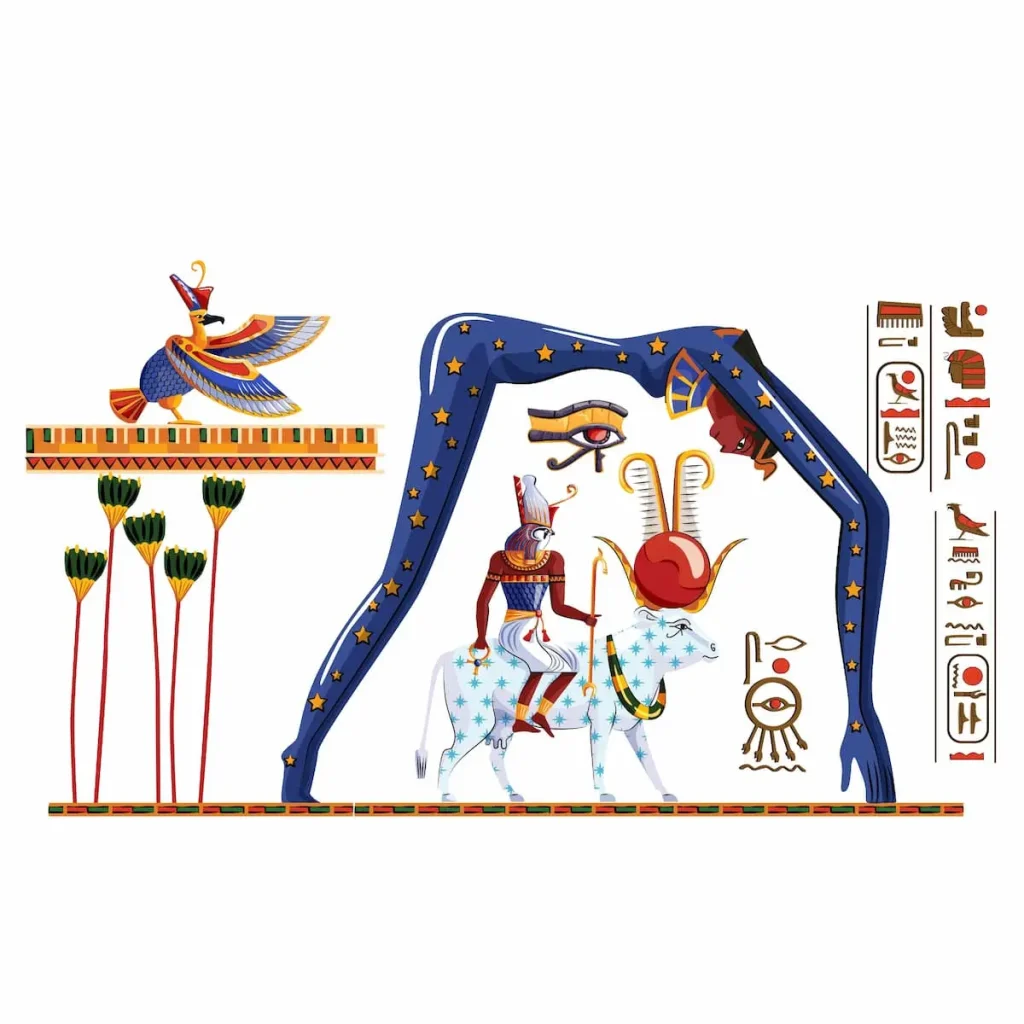
Egyptian god Nut
- Because of her role in saving Osiris, Nut was seen as a friend and protector of the dead. Nut was thought to attract the dead into her star-filled sky and refresh them with food and wine.
- She was often painted on the inside lid of the sarcophagus, protecting the deceased. The vaults of tombs were often painted dark blue with many stars as a representation of Nut.
The symbols of the Egyptian God Nut
- Woman Arching Over the Earth: Nut is often like a woman arching over the earth, her body adorned with stars. This imagery represents the night sky and emphasises her role in enveloping the world with her protective embrace.
- She has a symbol of a Cow: Sometimes, Nut is like a cow. She symbolizes her nurturing qualities. The cow form also underscores her connection to fertility and the life-giving aspects of the sky.
- Stars existed in her body: The stars that cover the Egyptian god Nut’s body are a direct representation of the night sky. They symbolise her control over celestial phenomena.
The Eternal Renewal and Rebirth
Nut and Ra
What Powers Does Nut Have?
The capacity of Egyptian God Nut is wide and expresses her task of preserving the balance of the universe. Her powers are extensive and effective, both in the heavens above and on this earth.
- Day and Night control: Nut uses her power of day and night control to maintain the equilibrium of time. She has the sun deity Ra as a kind of celestial orb that she devours and rejuvenates, which effectively serves as the upholding of timeless harmony and creativity.
- Protection and Nurturing: As a sky goddess, Nut has the power to protect and cover the earth. Her nurturing abilities are essential for maintaining life and providing a safe and ordered environment.
- In the grand celestial ballet, the barrier of the sea goddess Nut’s waters forms is the key to the harmony of the stellar stage. Nut dances with the ebb and flows of her salty water, and is responsible for the seas remaining in their proper place.
The book of the Egyptian God Nut
The Book of Nut is a modern title of The Fundamentals of the Course of the Stars. This is an important collection of ancient Egyptian astronomical texts, perhaps the earliest of several other such texts, going back at least to 2,000 BC. Nut plays the primary role in the Book of Nut. Moreover, the text tells about various other sky and Earth deities, such as the star deities and the decan deities. The cycles of the stars and planets, as well as timekeeping, are also in the book.
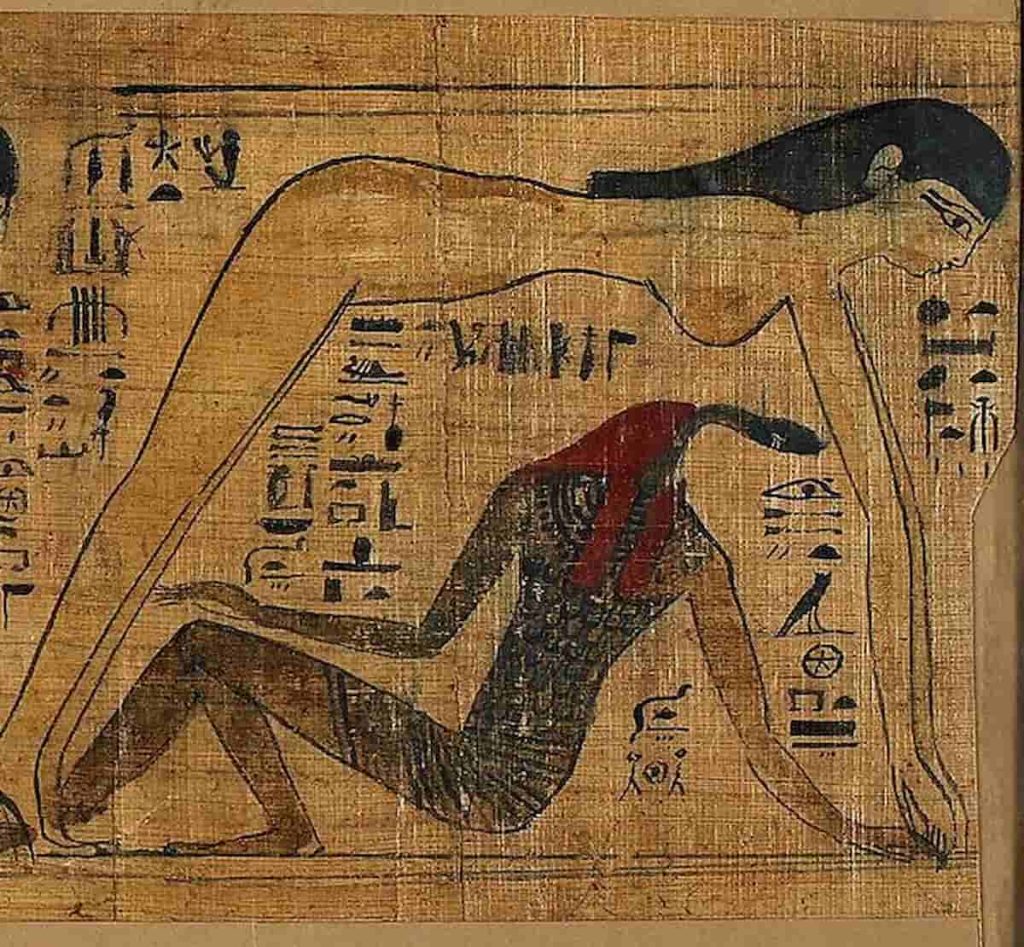
The book of the dead
Temples, Statues, and Depictions of Nut
While Nut did not have large temples. Her images and depictions were often alongside other major deities. That reflects her importance in maintaining cosmic order. Egyptians worshipped Nut in one notable site, which is the Temple of Hathor at Dendera.
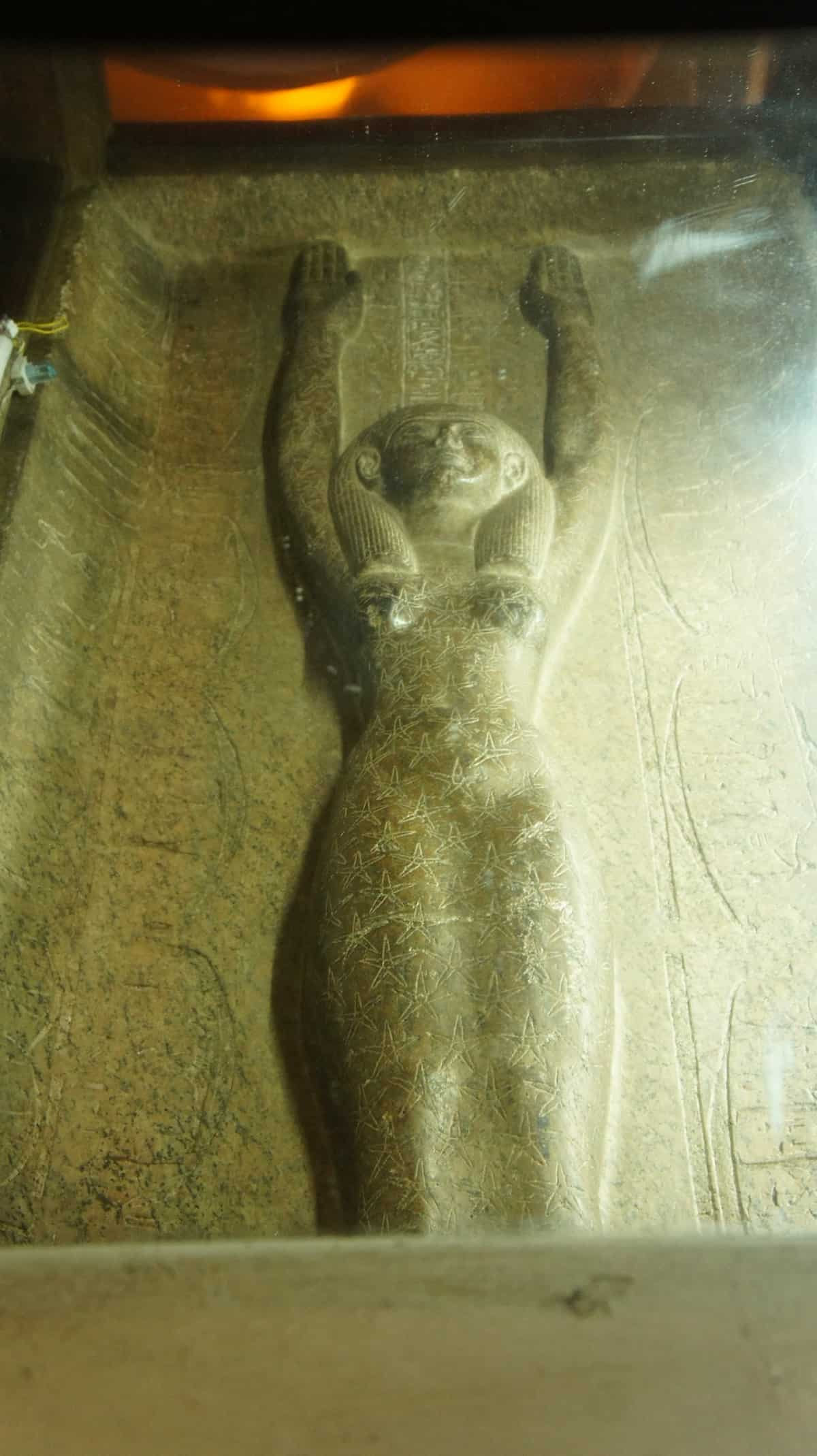
The statue of Nut at the Egyptian Museum
In addition, temples and tombs most commonly present pictures of Nut and her statues. Typically, they portray Nut in the sky, adorned with stars. That was a symbol of her governance of the heavens. The exceptional skill demonstrated in this distinctiveness of depictions underscores the importance she carries in cosmological harmony and her place in the cyclical sustenance of life. These figures, combined with images, have also been very potent in symbolizing and assurance of perpetuity. This was for the continuous protection of the universe.
Conclusion
Overall, Nut is very important because she lies in her complete embodiment of the celestial cycles. These cycles were central to the Egyptian worldview. As the goddess of the sky, she was a cosmic mother figure who created the divine world and guaranteed the daily rebirth of the sun. In the religious imagination of the Egyptians, she provided both the structure of the cosmos and the promise of eternal resurrection. Moreover, she offers protection and rebirth to the dead by welcoming them into her starry form. Because she was the protector of the dead.

